A caption tells us that while filming the Beatles at Twickenham Film Studios in January 1969 for a planned TV broadcast, director Michael Lindsay-Hogg and his crew amassed 60 hours of film and 150 hours of audio recordings. Some of it was seen in the 1970 film Let It Be, but the bulk of it has remained locked in the vaults ever since. Until now. Sometimes, watching Peter Jackson’s vast three-part documentary series Get Back, it feels like we’re having to sit through every second of all of it.
Jackson (of Lord of the Rings fame) spent four years editing and restoring the footage, and could only have been able make this deep dive into the Beatles’ archives with the official blessing of surviving band members Paul McCartney and Ringo Starr and the Apple organisation. The fact that its arrival coincides with McCartney’s new book The Lyrics: 1956 to the Present reminds us that a true professional never lets a promotional opportunity go to waste. But one has to wonder who the target audience is.
The Beatles can probably claim to be the best-loved band of all time, with a legacy that continues to stretch down the generations and in many respects defines what pop music could be. However, long expanses of the footage here, revealing a group struggling for inspiration and not at all certain of what they were doing sitting round in a huge, empty soundstage surrounded by cameras, might make the most ardent Beatle-o-phile take a rain check and head for the nearest friendly bar (pictured below, young Beatles).
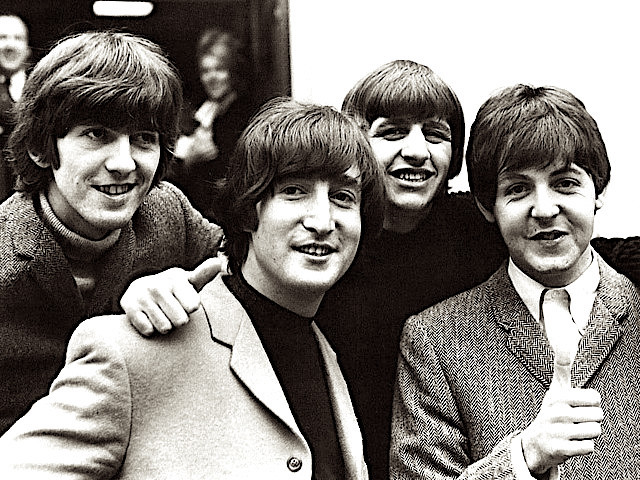 But if you can stick with it – the total running time of the three films is almost eight hours – you can maybe begin to discern the trajectory that Jackson seeks to draw out. It documents a period when the group were feeling rudderless in the aftermath of manager Brian Epstein’s death in 1967, had been through huge musical and personal changes, and had been retired from live performance and the close camaraderie it naturally engendered since August 1966.
But if you can stick with it – the total running time of the three films is almost eight hours – you can maybe begin to discern the trajectory that Jackson seeks to draw out. It documents a period when the group were feeling rudderless in the aftermath of manager Brian Epstein’s death in 1967, had been through huge musical and personal changes, and had been retired from live performance and the close camaraderie it naturally engendered since August 1966.
The first instalment starts brightly, with a brisk 10-minute montage spanning the band’s history from John Lennon’s early band The Quarrymen through their days in Hamburg, the Cavern club in Liverpool, Beatlemania, the conquest of America, Sgt Pepper and their stint with the Maharishi in Rishikesh. Then we learn of their plan to give themselves a creative kick-start by writing a batch of new songs from scratch, recording them before a live audience while the film cameras rolled, and then also starring in an accompanying TV special.
It was a big ask – a whole list of big asks even – and, unsurprisingly, their ambitions needed some drastic scaling back. Episode one is dangerously close to being two and half hours of morale-sapping ennui as the foursome scratch about for inspiration, kick about daft ideas like taking a cruise to Libya to play at an ancient Roman amphitheatre in Sabratha, and intermittently amuse themselves by tinkering with songs, be it their own or other people’s such as “I Shall Be Released”, “The Third Man Theme” or “Midnight Special”. The setting of a drab, cavernous hangar is tedious to look at and evidently deadly for musical inspiration.
The main event is George Harrison’s sudden announcement that he’s quitting the band, evidently feeling overshadowed and ignored by Lennon and McCartney, though his quiet, undemonstrative manner has given little indication of his inner feelings. “If he doesn’t come back by Tuesday we get Clapton,” snorts Lennon, though it’s not far into episode two when Harrison returns, having got the others to agree they’ll dump the idea of a live TV special and transfer their writing sessions to the more congenial surroundings of Apple's in-house studio.
The saga gradually picks up speed as the group begin to form an idea of what new songs they’ll record (“Get Back”, “I’ve Got a Feeling” and “Two of Us” emerge as front-runners), though the decision that they’ll make a feature film instead of a live TV show has left McCartney pining for some sort of live “pay-off” event. It’s Lindsay-Hogg and recording engineer Glyn Johns who suggest they play a live gig on the roof of Apple’s Savile Row headquarters, and this forms the subject of episode three.
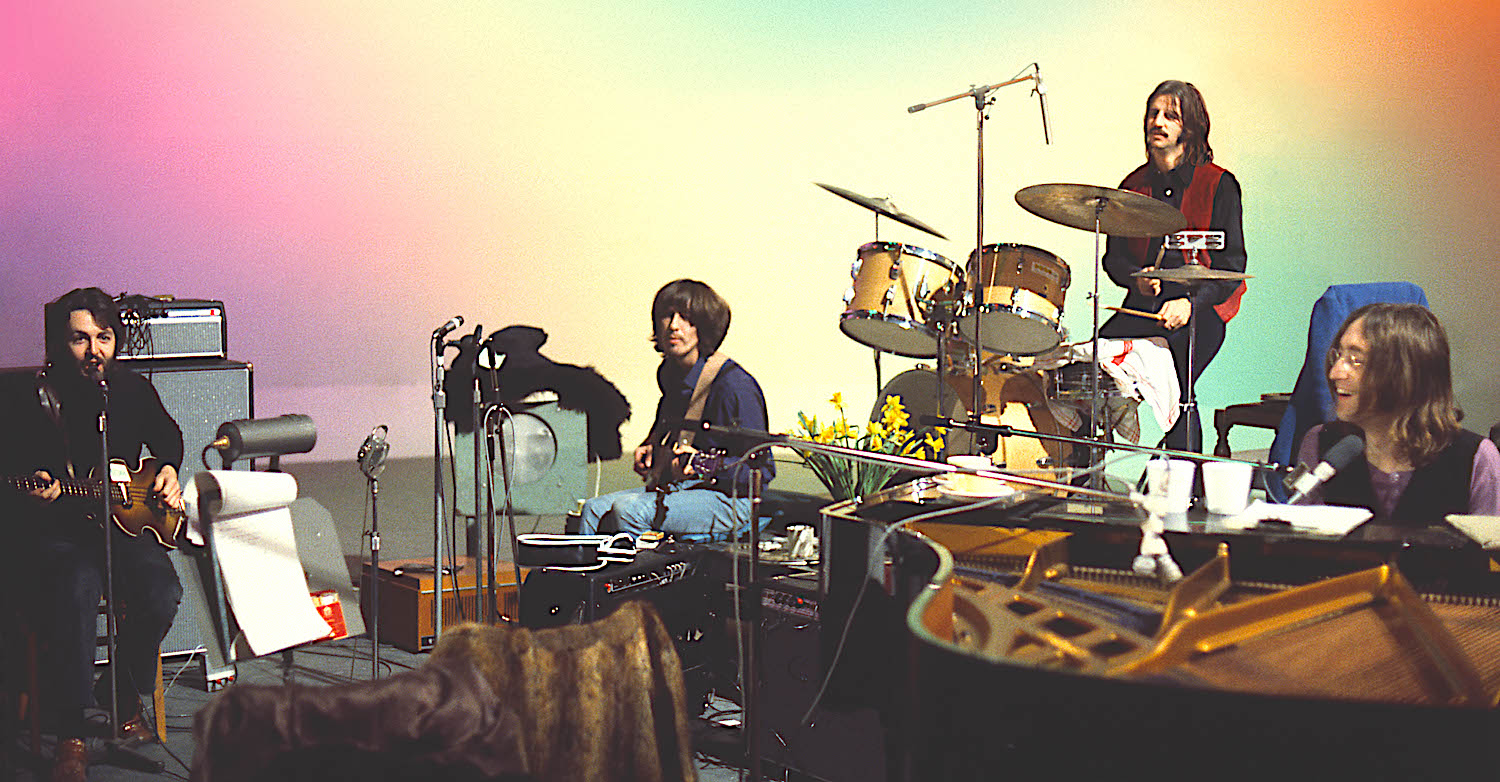 Galvanised by a fresh sense of purpose, and given a boost by the addition of an ever-cheerful Billy Preston on electric piano, the Beatles rediscover their old team spirit. While Lennon admits he gets fed up with McCartney’s urge to take control, this suddenly doesn’t look like a band on the brink of breaking up, though Lennon's enthusiastic account of his dinner with potential manager Allen Klein hoists a storm warning of trouble ahead. While Lennon is by now inseparable from Yoko, there’s no sense here that their relationship is splitting the Beatles, and it’s noticeable how comfortable Yoko and Linda McCartney look when they’re chatting together. There’s a nice little moment when debonair producer George Martin (looking as if he’s about to lead England out onto the pitch at Lord’s or pilot a Jaguar around Le Mans) comments encouragingly to Harrison that “it’s happening, isn’t it?”
Galvanised by a fresh sense of purpose, and given a boost by the addition of an ever-cheerful Billy Preston on electric piano, the Beatles rediscover their old team spirit. While Lennon admits he gets fed up with McCartney’s urge to take control, this suddenly doesn’t look like a band on the brink of breaking up, though Lennon's enthusiastic account of his dinner with potential manager Allen Klein hoists a storm warning of trouble ahead. While Lennon is by now inseparable from Yoko, there’s no sense here that their relationship is splitting the Beatles, and it’s noticeable how comfortable Yoko and Linda McCartney look when they’re chatting together. There’s a nice little moment when debonair producer George Martin (looking as if he’s about to lead England out onto the pitch at Lord’s or pilot a Jaguar around Le Mans) comments encouragingly to Harrison that “it’s happening, isn’t it?”
But do you really need eight hours of this? If you have other pressing engagements, you could just watch episode three. There’s some great studio footage as they nail down versions of “Let It Be” and Don’t Let Me Down”, and the rooftop gig is riotously good fun. Instead of the sad wreckage of a pop group we saw earlier, here’s the Beatles turning back the years, rocking their socks off and loving every minute, banging out storming versions of “Get Back”, “I’ve Got a Feeling” and “One After 909”. This is intercut with reactions (mostly enthusiastic) of bystanders in the streets below, and the arrival of the cops after complaints about the noise (“you can hear it down at the police station,” boggles one constable).
Get Back is a bit like those five-CD reissues of a classic album, containing a jumble-sale of outtakes, live tracks and sundry stuff tenuously connected to the main event. Approach with a critical eye.
- The Beatles: Get Back premieres on Disney+ November 25, 26 and 27
- Read more TV reviews on theartsdesk




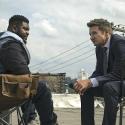

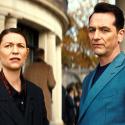
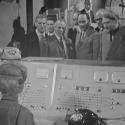







Add comment